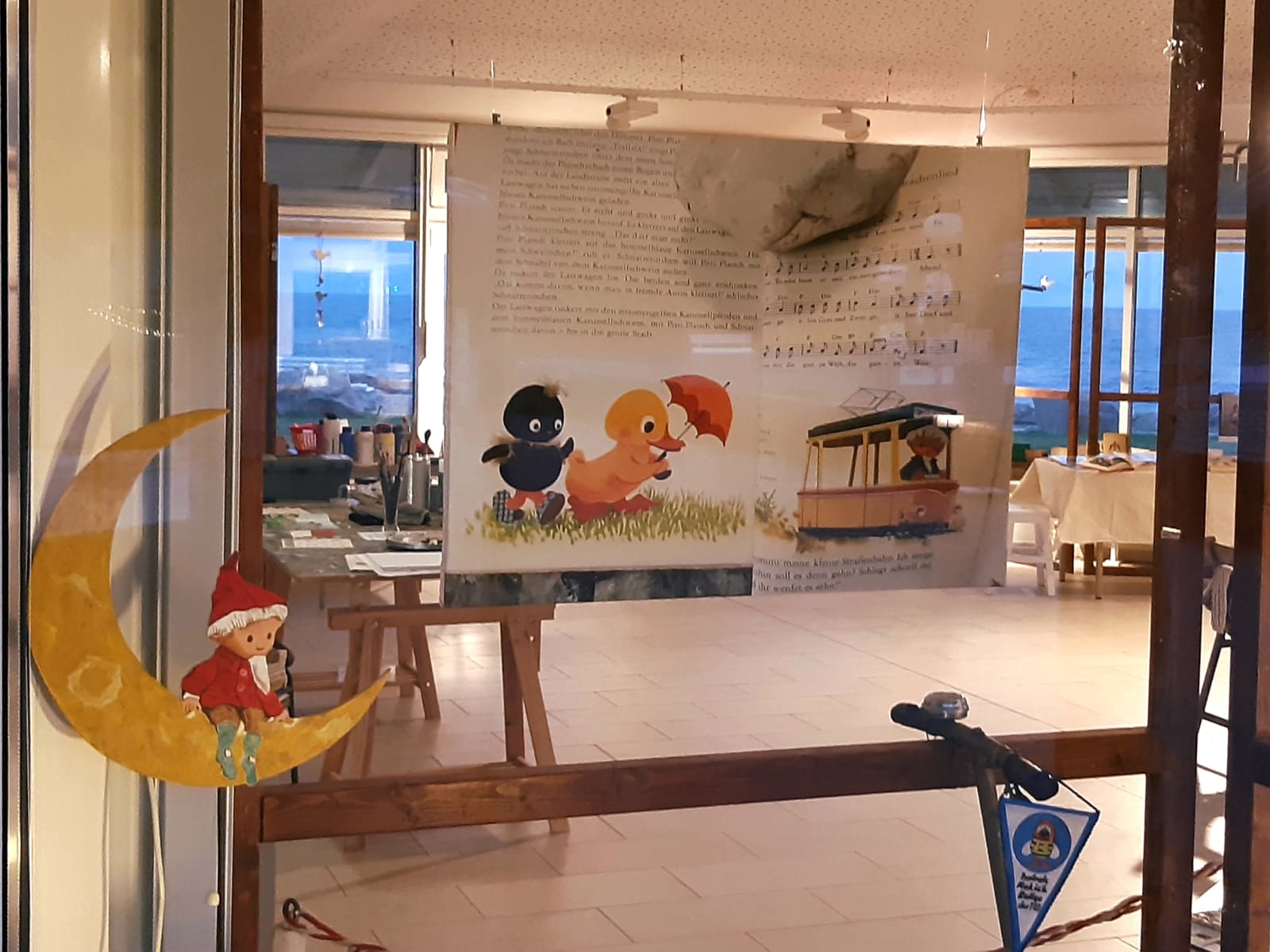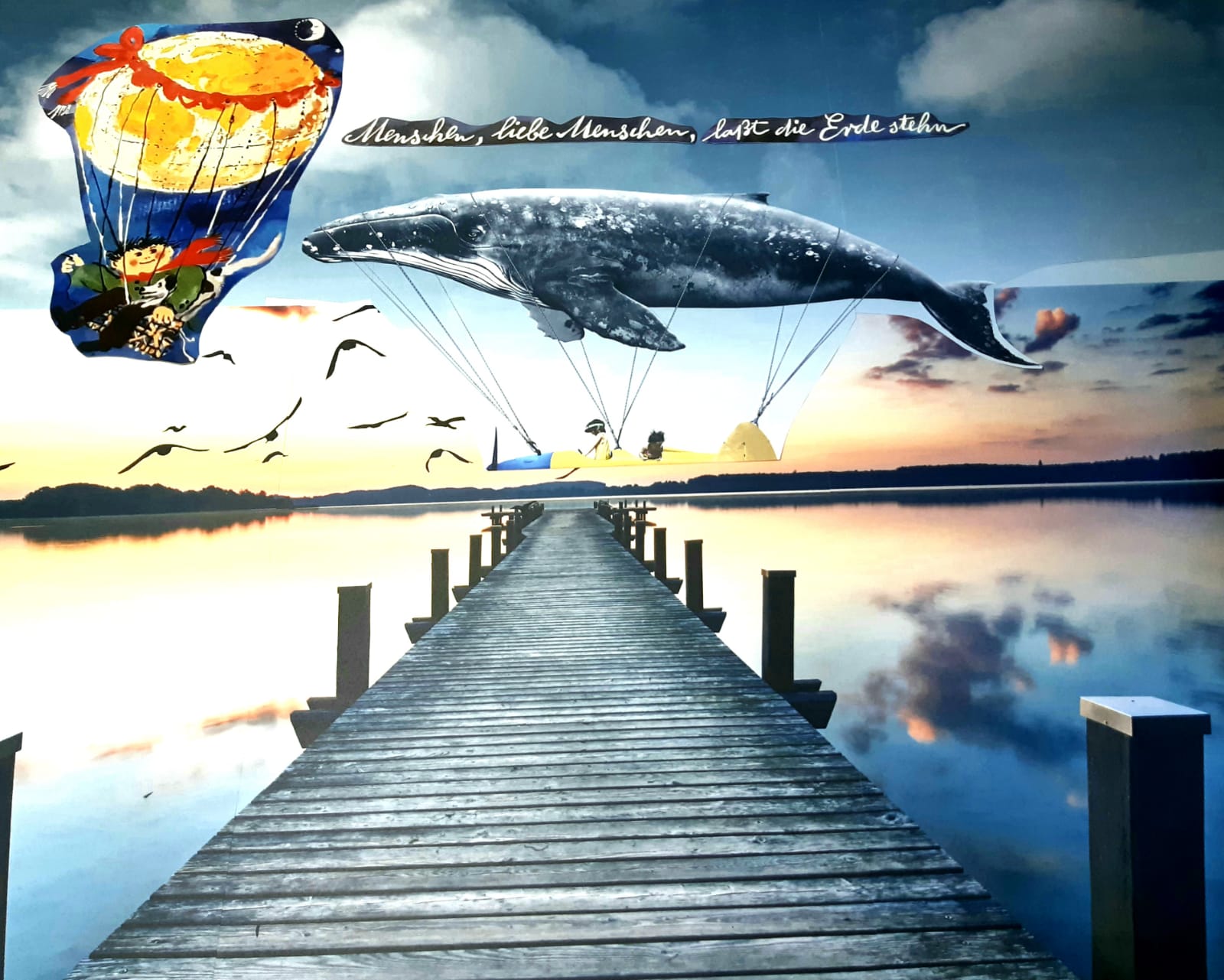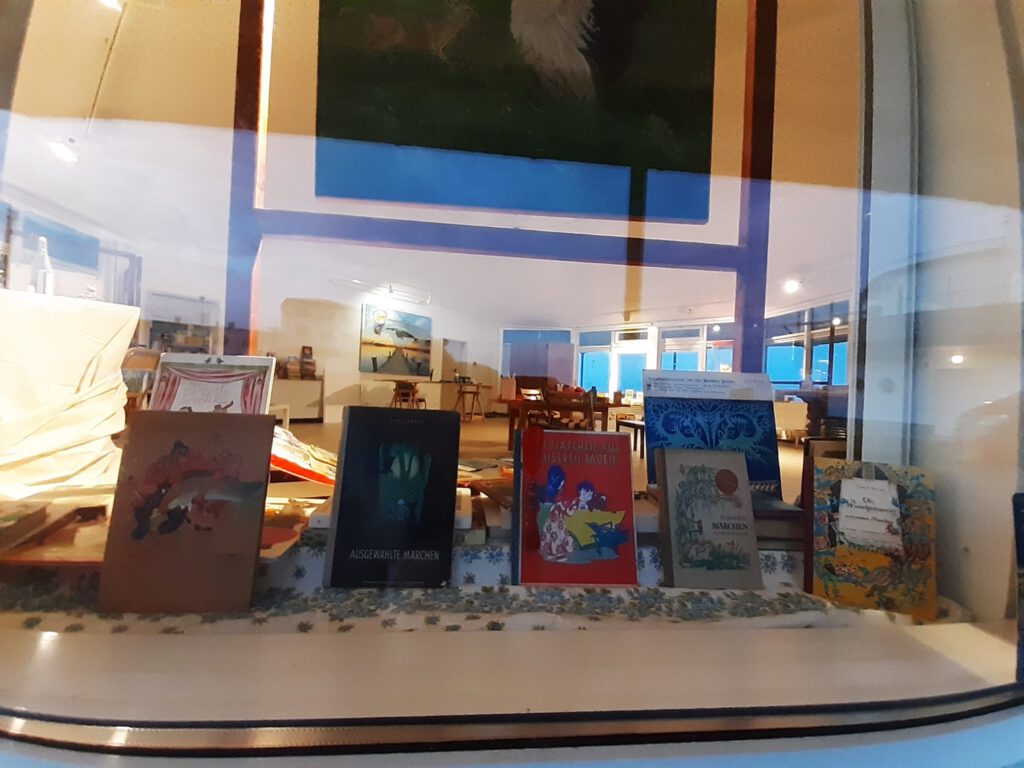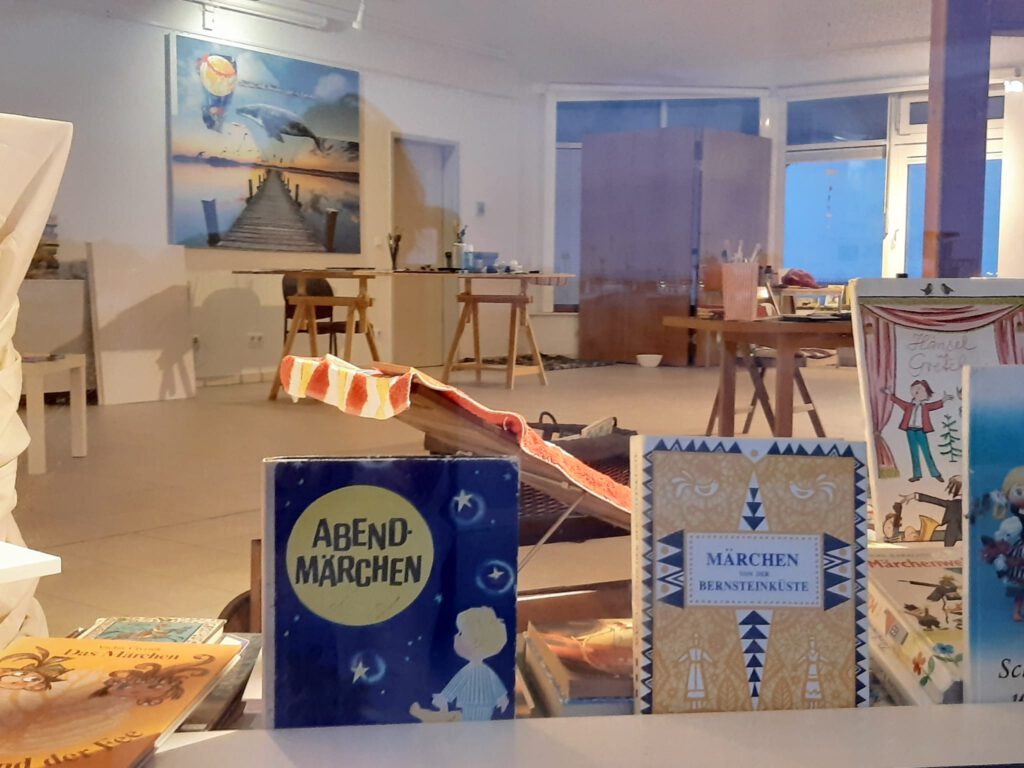Exhibition "Lütt Matten und die weiße Muschel / Treasures of GDR Children's Book Literature" in Sassnitz
The exhibition in the pavilion shows over 1,200 original GDR children's books and records. With the exhibition, I would like to make a contribution to cultural enrichment. Culture is so important at all times to open future perspectives for all cultural and social classes. The exhibition should be understood as a meeting place especially for families with children. With this exhibition I am realizing a project of my heart.
I deliberately chose the exhibition location because I have wonderful childhood memories of the town of Sassnitz. When I was 5 years old, I got "Lütt Matten und die weiße Muschel" as a gift from my father. The book fits so well with the island and my memories, as my father was a fisherman.
I contribute to the exhibition, in addition to the entire books, some collages and pictures. For my part, these thought-pictures are intended to show the children what books are capable of and how earlier authors were inspired with stories from the GDR era. GDR children's books have long been classics:
Dig into your memory for a moment. Well - does he still look familiar to you, the little mat on the cover of the book? Even today, children and adults are touched by how the little boy tries to catch fish with his homemade, probably really puny fish trap and it just doesn't work. The stories and images of our childhood sometimes fade, but they are never completely gone! Who doesn't know them, the stories of the "boatswain on the floe" or "the little scaredy-cat"? The children's books stimulated the imagination of young readers, often bridged the gap between text and the imaginary world of pictures, and thus formed an indispensable part of the overall work of art "children's book". The illustrators' colorful pictures brought magical landscapes to life and encouraged readers to follow them into the story.
The exhibition is devoted to the broad spectrum of book art from 1949 to 1989, a very special heyday of the art of illustration. The great illustrator Werner Klemke, whom I hold in high esteem, was probably the best-known illustrator among them. Many of his lovingly designed children's books such as "Hirsch Heinrich" or "Das Wolkenschaf" and many others became classics. The enormous diversity of his artistic expression coupled with wit and irony characterized not only his picture book work, but also his illustrations. Children's books had a very high status in the GDR, as they were an excellent medium for ideologically influencing children and young people.
Socialist Realism:
In the 1950s and 1960s, the slogan of "socialist realism" applied without exception to children's and youth literature, as it did to all areas of art. There was no shortage of children's books. From 1949 to 1989, the Berlin Children's Book Publishing House alone published nearly 5,000 titles with a total circulation of about 300 million copies. In terms of quality, the books had to stand up to no international comparison. The majority of them were known and loved far beyond the borders of the GDR. The SED underpinned democratic education in a very practical way - in the 1950s, 628 tons of paper were available for children's book publishing alone, while only 3,000 tons were made available for all adult literature. Exemplary for this are, among others, Erwin Strittmatters "Tinko" and especially the novels by Soviet authors, such as "Timur und sein Trupp" (Timur and his Troop), which every schoolchild in the GDR had to read and which deal with how children and young people can make their "contribution to the building of socialism."
Phantasy instead of dogmatism:
By the end of the sixties, a change was taking place; the optimism of the reconstruction years had been used up, and authors were breaking the narrow confines of "socialist realism. A happy childhood seemed possible only if fundamental changes took place in society, a counter-design to the seemingly threatening world of adults. Children should retain their childishness as long as possible: Throughout the years, poets and authors have always had their own incentive to write for children. The majority of the 250 or so authors who wrote exclusively for children in the 1980s had nothing to hide: Benno Pludra, Elizabeth Shaw, Liselotte Welskopf-Henrich, Gerhard Holtz-Baumert, Christa Kozik. And the qualifications of the authoritative illustrators, such as Volker Pfüller, Egbert Herfurth, Werner Klemke and Klaus Ensikat, were also beyond reproach. In pedagogical terms: in an environment that is doggedly patient in making children adults from the age of eight at the latest, poets who write for children try to preserve their childishness for as long as possible.How long? Ideally: until the age of seventy. Einstein stuck his tongue out at the universe at that age.
Dare more simplicity and less clutter:
It is touching to see how the writers and illustrators unreservedly engage with the childlike world and take pains to make it timeless for the audience with deep understanding and boundless affection. I sometimes wish for more of that in our time. Have fun and enjoy yourself here at the Pavilion, the memories that may be awakened are priceless! The exhibition in the pavilion at the foot of the pier will be held from 08.06. to 14.06.2022 and from 16.06. to 22.06.2022 the exhibition will be further presented in the Sassnitz City Library.
Admission is free of charge!
























